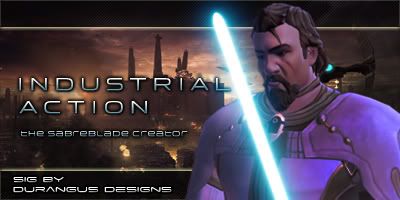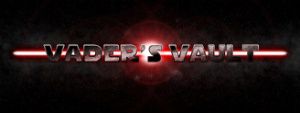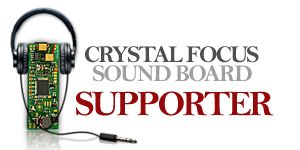This if my first post on the forum, so forgive me if I tend to ramble on.
I have an idea for a new concept in soundboards for customer saber hilts. I have spoke to my co-workers about this often, and through the discussion, the idea has been tweaked quite a bit, but the final idea would truly be ground breaking. The main problem is I have know knowledge of chip/board design, or how to program them with certain features. Because of this, I am putting this idea out there for anyone that has the needed knowledge to create.
The idea came from my hobby of playing guitar. Back in the 50's and 60's, there was a device called a "Leslie Rotating Speaker" that many guitarist would use to add a "swooshing" sound to their guitar playing. The Leslie speaker used the Doppler effect to change the sound based on a rotating horn sitting on top of a front speaker. the Doppler effect caused by the rotating speaker would change the pitch of the guitar. These speakers were large and cumbersome, so other ways were found to create the same effect. Some recording engineers found that by setting their thumb on the flange for the tape recorder, they could create a similar effect, so when the concept entered the realm of effects pedals, it was called a flanger. The main controls other then mix of the original signal to effected signal are depth and speed.
This is where the concept of how the actual sounds of the sabers are created for the movie. I have read on numerous websites that the saber sounds were created by playing the sound through a speaker, and then moving a mic in front of the speaker, to create the Doppler effect pitch change for each swing. The sound engineers matched the speed and force of the swings on screen, to get the correct pitch shift for each movement. The way the swing sounds are created could be produced using a standard hum sound, and then applying a flanger effect to that sound, with the sensors used to determine swing being used to control speed and depth of the effect. I believe that this would create the most realistic swing sounds as the effect would start and stop within milliseconds of the swing starting or stopping. It would also remove the need for multiple swing sounds to be stored on the saber, to avoid hearing the same swing twice.
To add to this, for this idea to work, you would need to create a base "idle hum" sound that all sabers would use. This would also tie into the way the oringinal sound of the sabers were created. All movie sabers come from the same base hum sound, they are just EQ'ed differently for each character. With the proliferation of licensed saber replicas, that contain screen accurate sound, it should be a simple process of tweaking the EQ settings on the different idle hums, to find out what the original base idle sound is. Once you have the base idle hum created, you would just need to include the correct number of EQ frequencies, to recreate all the screen used saber hums.
There is one other major change to the existing sound board technology that would need to be changed. Although highly simplified, the current boards are almost all a single channel mono output device. For this new sound production concept to work, the board would need to be changed to a 3 channel mono output device. The reason for this is how the sounds would be broken down.
Channel 1 = This will play the main activation, deactivation and idle hum sound for the saber. It will be running 100% of the time, with no effects applied other than the EQ settings
Channel 2 = This will play the main activation, deactivation and idle hum sound for the saber. This channel will have the EQ settings applied to it 100% of the time, and when the saber is moved, the flanger effect will be applied to it as well.
Channel 3 = This channel will be used for special case sounds, like saber clash, saber lockup, blaster deflect, force push, etc.
you can even go to the degree of allowing EQ settings on each separate channel, so you can truly customize the full sound spectrum of the saber, from idle hum to swing, to saber clash. As an added feature, the EQ can be used to fix frequency problems caused by improperly sized sound chambers.
As I said in the beginning, I tend to ramble on a little, but i truly believe that if one of the sound experts the create the boards we have today were to look into these options, we could end up with a board that can truly recreate every aspect of the saber sounds from the movies.




 Reply With Quote
Reply With Quote








Bookmarks